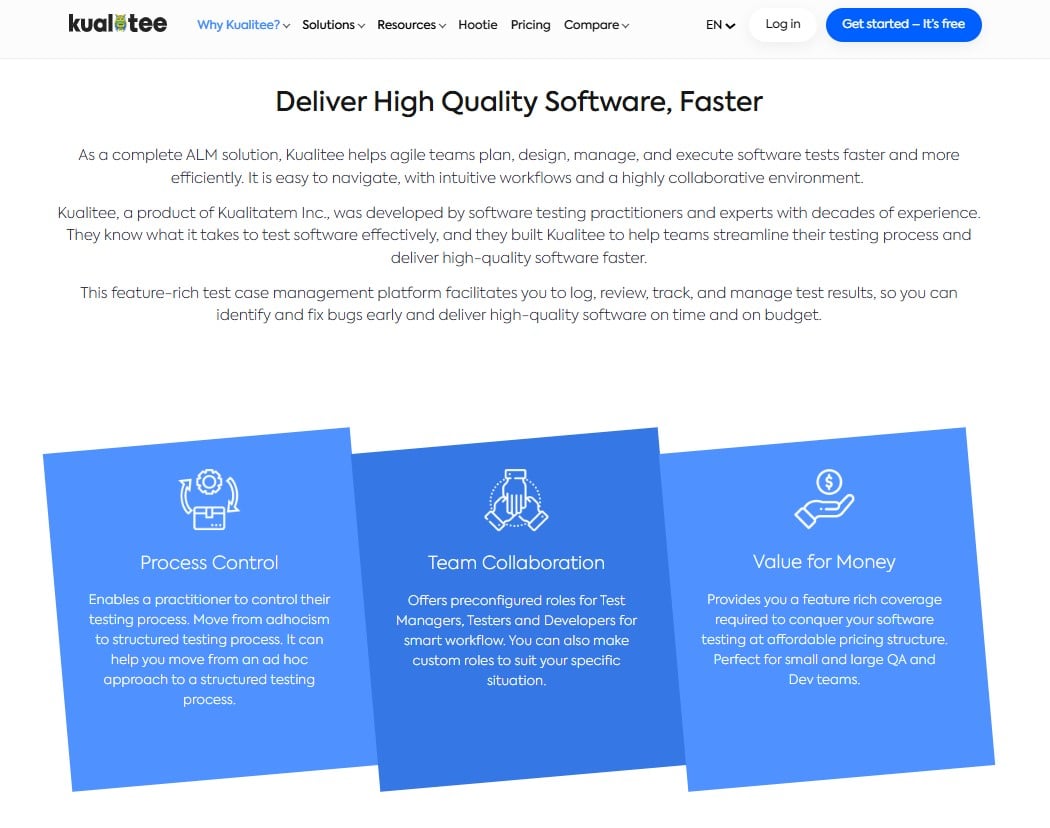When it comes to software QA testing, teams often have to face various challenges. These challenges slow down releases. And on top of that, new risks can surface, which might frustrate stakeholders.
The good news is that, with a high-end test management tool, many pain points of QA teams can be addressed. The process can be streamlined, and everything can become more efficient.
This article will explore 10 of the most common testing problems. And discuss how a high-quality test management/QA testing tool can solve them. So, let’s start with the first one.
1. Lack of Centralized Test Case Management
First and foremost, it’s no secret that every QA team has to develop test cases for software applications. What happens most of the time is that these cases are scattered across spreadsheets, emails, and different documents.
This leads to confusion, duplication, and in worse cases, lost knowledge. Teams waste so much time searching for the latest version of a test. And if it’s not found, they have to recreate it.
This issue can be minimized with a test management tool. Now you might ask, how so? Well, most such tools provide users with a central repository for all test cases. This makes them easier to access and search.
Also, everyone will be working from a single source of truth. In turn, this leads to reduced redundancy. So, basically, with a test management tool, teams get:
- Easy organization and categorization of test cases
- Version control and history tracking
- Quick retrieval and reuse for regression cycles
2. Poor Collaboration and Communication
Distributed teams struggle with miscommunication. There’s a good chance that the requirements were unclearly communicated to them, since they’re not present in person. Apart from this, there’s the issue of siloed information as well.
All these things can lead to missed defects and delays. But what a QA testing/test management tool does is it facilitates real-time communication.
Shared dashboards are provided, along with comment threads. Everyone involved, be they testers or developers, can stay aligned with each other with such features. This makes for the following key benefits:
- Shared visibility into test progress and results
- Centralized discussions and feedback
- Reduced misunderstandings and duplicated efforts
3. Inadequate Test Coverage
Testing software applications for defects requires extreme focus. Without clear traceability, it’s easy to miss critical requirements and features during testing.
Consequently, this results in gaps that allow bugs to slip into production. Fortunately, though, test management tools link requirements to test cases and execution results. They provide end-to-end traceability. With that, teams can quickly identify untested areas and ensure full coverage. So, QA managers are getting:
- Visual coverage maps and reports
- Traceability for audits and compliance
- Confidence that all requirements are validated
4. Manual and Error-Prone Test Execution
Since the dawn of SQA, tests have been executed manually. Due to this, they are time-consuming and prone to human error. This is the case especially for complex test scenarios.
To tackle this, modern QA testing tools integrate with automation frameworks. In turn, allowing teams to schedule, execute, and track automated tests. All while keeping alongside manual ones, too. This boosts the efficiency and accuracy of the testing process.
So, the benefits of a test management tool in this regard are:
- Automated scheduling and execution of tests
- Reduced manual effort and fewer mistakes
- Smooth integration with automation tools. i.e., Selenium.
5. Inefficient Defect Tracking and Resolution
The fifth problem is that defects reported through email or spreadsheets often get lost. Sometimes they can also get duplicated or remain unresolved. There’s no solid way of keeping track of them. And this leads to frustration and wasted time.
That is, until a test management tool comes in. Most of them offer integrated defect management. As well as allowing teams to log, track, and prioritize bugs in real time. Users can link the defects to tests and requirements, allowing for the full context. All in all, the benefits include:
- Centralized defect repository
- Real-time status updates
- Faster resolution and better workflows
6. Lack of Real-Time Reporting and Analytics
Up-to-date metrics are very important for proper quality assurance. Without them, QA managers struggle to make informed decisions. They might not be able to identify all the bottlenecks or explain progress to the parties involved.
Thankfully, quality assurance softwares offer a fix for this issue. They provide personalized dashboards and real-time reports on test execution. The defect trends and coverage are also highlighted.
This data is right there in front of the managers, and they can make better decisions. Key benefits are:
- Instant access to key metrics and KPIs
- Customizable dashboards for different roles
- Instant data export for audits and compliance
7. Difficulty Managing Test Data and Environments
Test data and environments can be inconsistent or entirely unavailable. When this happens, results become unreliable, and the testing progress is halted.
A good QA testing tool helps manage test data sets. It also assists in taking care of the environment configurations and dependencies. Teams can document, share, and reuse their environment setups easily.
This reduces the time needed to set things up, along with the errors that come with it. Having said that, the main advantages that teams get with such a tool are as follows.
- Centralized documentation of test data and environments
- Easy replication of test setups
- Reduced environment-related failures
8. Limited Integration with Development and CI/CD Tools
Testing in isolation from development and deployment pipelines leads to delays and missed feedback loops.
These days, test management tools allow integrations with popular development, CI/CD, and bug tracking tools. Examples can be Jira, Jenkins, and GitHub. What this does is it ensures smooth workflows and continuous feedback.
QA teams receive these benefits:
- Automated test triggering on code commits
- Bi-directional sync with issue trackers
- Faster feedback and shorter release cycles
9. Resource Allocation and Workload Imbalance
Team workloads are often not balanced. Some testers are overloaded while others are underutilized.
This is a common problem everywhere, and it leads to burnout for those who are overworking. Not just that, but the team’s overall efficiency is also decreased due to this issue.
A quality assurance/test management software provides managers with insights into resource allocation. It also shows them the test assignments and progress so they can balance workloads. This helps in optimizing team performance. So, the main advantages are:
- Clear assignment of test cases and tasks
- Workload visualization for better planning
- Improved team morale and productivity
10. Difficulty in Continuous Improvement
As humans, we tend to repeat the same mistakes. The same is the case with QA teams. They might not exactly remember what happened in the last project due to the lack of historical data and insights.
A software testing tool can help massively here. It stores historical data, metrics, and the lessons learned. This enables teams to analyze trends and refine their processes over time.
Continuous improvement becomes a reality for them rather than just a buzzword. In this regard, with such a tool, teams get:
- Quick access to past project data and outcomes
- Identification of recurring issues and bottlenecks
- Data-driven process optimization
Why Choose Kualitee? A Complete Solution for Test Management

While many tools on the market are able to address 5 or 7 of the aforementioned pain points, Kualitee tackles all 10. It offers:
- Centralized test case management
- AI-powered test case generation
- Built-in defect management
- Custom dashboards and reporting tailored for each role
- Wide integration support
- Collaboration and communication tools
- End-to-end traceability for high Test Coverage
- Real-time reporting and analytics
- Resource allocation insights
- Quick access to older project results
These things make Kualitee the ideal test management tool for QA teams, individuals, and organizations.
Conclusion
A high-quality test management tool can address most of the problems that QA teams face. These problems include issues related to test case management and collaboration. As well as coverage, execution, and defect tracking.
Such a tool provides centralized resources, real-time communication, and comprehensive reporting, along with other features.
If you’re looking for a test management tool that does all this, check out Kualitee. It offers an all-in-one solution that lets teams streamline their processes. Ultimately leading them to better software releases.
















































